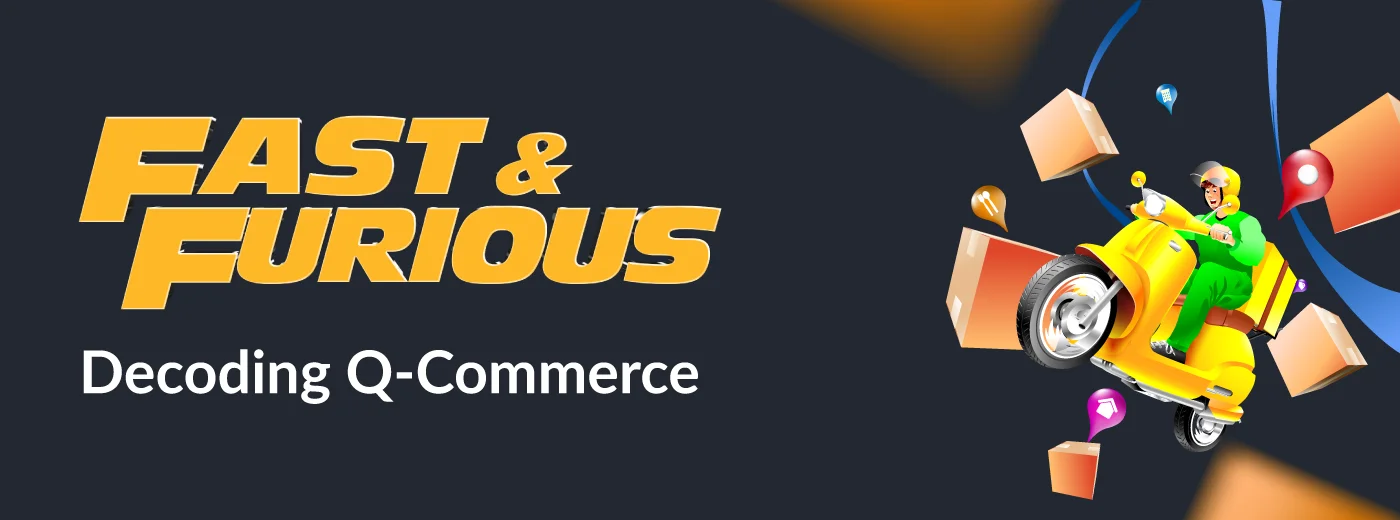
Sign up to receive latest insights & updates in technology, AI & data analytics, data science, & innovations from Polestar Analytics.
“Sophisticated dish-level demand prediction algorithms, and future-ready in-stations robotics…” - This is an excerpt taken from the Zomato Instant 10-min food delivery announcement, where the founder of Zomato talks about 10-min food offerings.
Why are we starting our article with this phrase? Because this summarizes exactly how Data Analytics in Q-commerce has become an integral part of the operations. And why now? It is because, according to the consulting firm RedSeer, the Indian Q-commerce market is estimated to be 10-15 times $5 billion by 2025, from $0.3 billion currently.
But before we deep dive into the operations of quick commerce and try to decode them one by one, and know the role of data and technology, let’s talk a little bit about what Q-commerce is and how commerce has evolved over time.
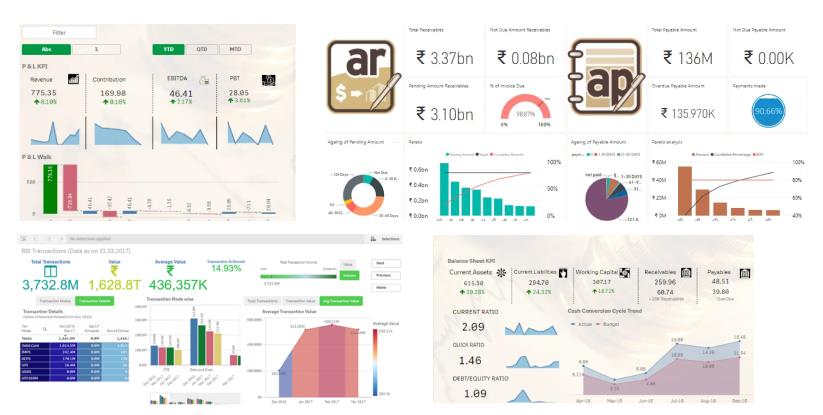
Everyone knows what E-commerce is (at the least) after the advent of Amazon and its success. But what is Q-Commerce? As the E in E-commerce suggests Electronic, which means buying and selling of goods happens online. Similarly, the Q in Q-commerce means Quick, showing how fast the orders are being delivered. It is also sometimes interchangeably used with ‘on-demand delivery’ and ‘e-grocery’.
But, how Quick is Quick? The average time of delivery of e-commerce was five-and-half days in 2012, which has reduced over time and has gradually come down to 2-3 days in 2019, according to a survey by Clutch. With Q-commerce the delivery is not in days but in minutes.
In short, Q-commerce refers to the services where customers are able to receive deliveries (normally which are small) in a matter of minutes.
You can take a look at the infographic below, to see how e-commerce has evolved into q-commerce.
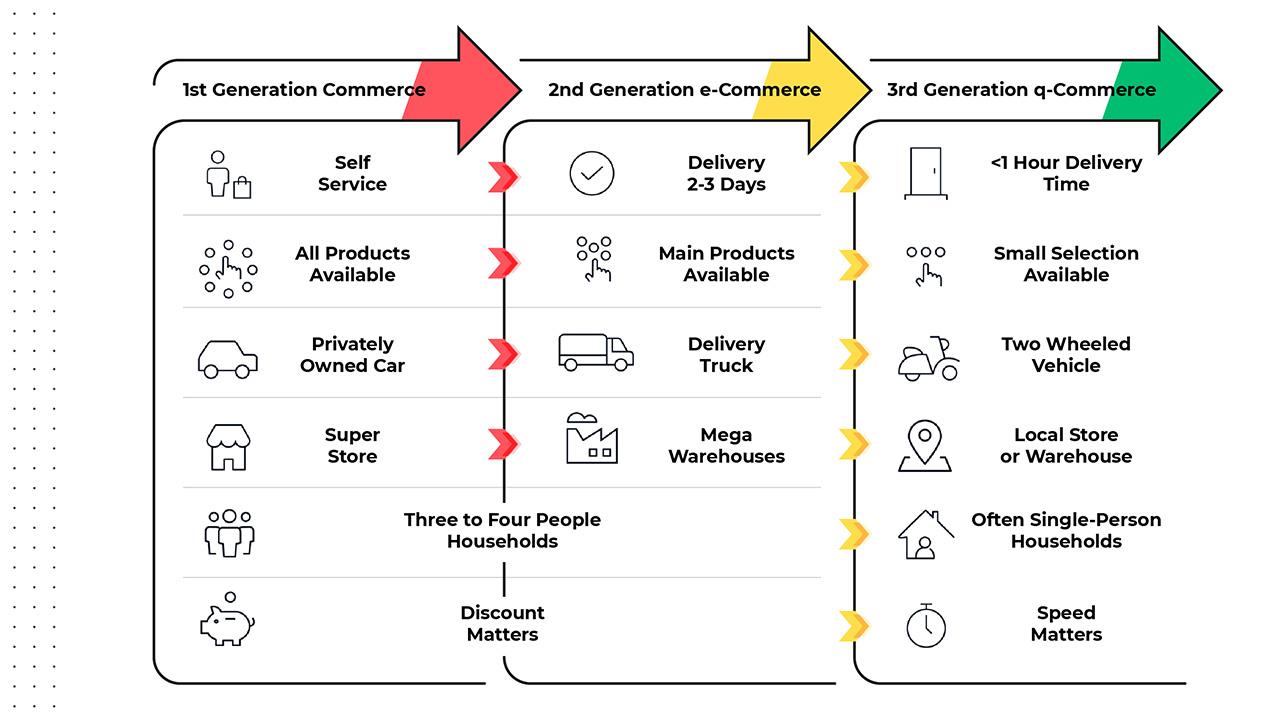
Source: Data Weave
Also, this ecosystem is not just limited to groceries but can be expanded to Food Delivery, Pharmacy, Cloud Kitchens, Gifts, Flowers, Couriers, Meat Delivery, etc. Therefore, types of Q commerce may include Third-party delivery platforms like Food and Delivery, Retail Giants, Specialists for Grocery, etc. there also might be an overlap between such platforms.
In India, you can see the many Q-commerce platforms like Blinkit, Swiggy Instamart, Zepto, Dunzo, etc. have come into the foray, while in the US- GoPuff which was set up in 2013, delivers groceries in 30 minutes and is valued at $15 billion, and even across other countries like Gorillas, which is Berlin-based and U.K.’s Zapp (Other examples include Delivery Hero, Getir, Flink, Glovo, JOKR, etc.) are already quite popular in their areas of operations.
Delivery Hero, a company based out of Berlin, has seen a 400% year-on-year growth, while even companies like Apple, are seeing a growth of 11% Y-o-Y.
What it signifies is that Consumers across the world are looking for solutions that are looking for near-instant delivery which is cheaper, and companies are always on the lookout for providing the maximum consumer experience.
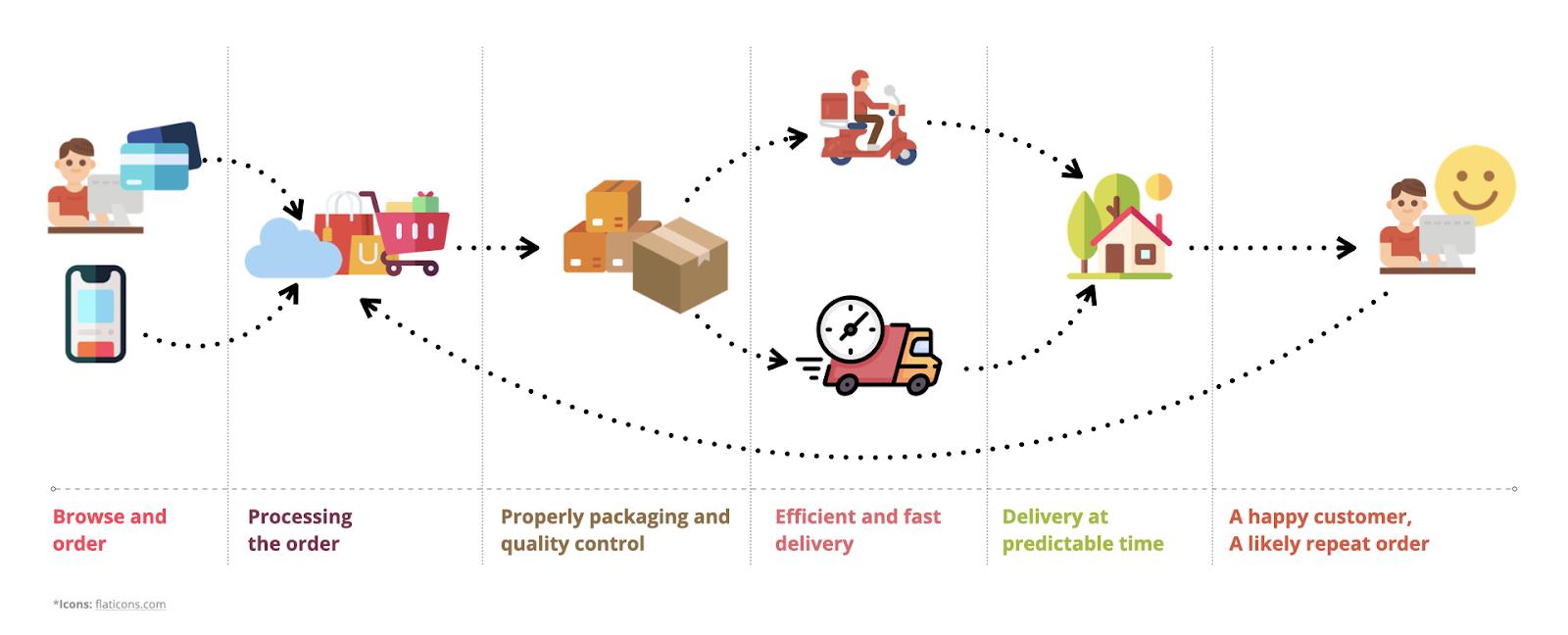
For example, whenever I crave Maggi or a Soda (in India), I can open an app for the same which can be Swiggy Instamart (not endorsing it, just an example), and after the payment and placing the order, I would start cutting the veggies required which would be done by the time the order arrives. Or I can directly order Maggi from a restaurant using Zomato (again, not endorsing, just an example) and wait for the food to be delivered. Or just stay hungry but would rather stick to the first two.
The same cycle has been represented in the infographic above, but there’s a lot that goes on in the matter of a few minutes. Let’s take the first, for the order to be available what would be the issues that can happen?
These might sound very simple and are usually taken for granted but it actually isn’t the case. One of the most important things on this list is a fulfillment center. This is where perspective is required.
For example, take the delivery center of Amazon its typical size is 800,000 square feet, vs the average size of a D-Mart which is around 34,000 sq ft, vs the size of a Q-commerce fulfillment center or called the micro-fulfillment center (or sometimes called Dark Stores) which is 2000 to 5000 sqft in nature. But why?
This is because for Q-Commerce a hub-spoke model of delivery with many micro-fulfillment centers and dark stores form the ecosystem of the logistics. The traditional Distribution model of E-commerce, which has larger delivery centers stores, and more SKUs are usually located on the outskirts of the city.
The disadvantage of this model for Q-Commerce is that with the promised delivery time of a few minutes, it is not logistically possible to deliver far away in a short period of time. Therefore, Hub-and-spoke models are normally used as a part of their supply chain which enables them to establish Dark Stores even in the mid of the city at a smaller cost than a normal hub.
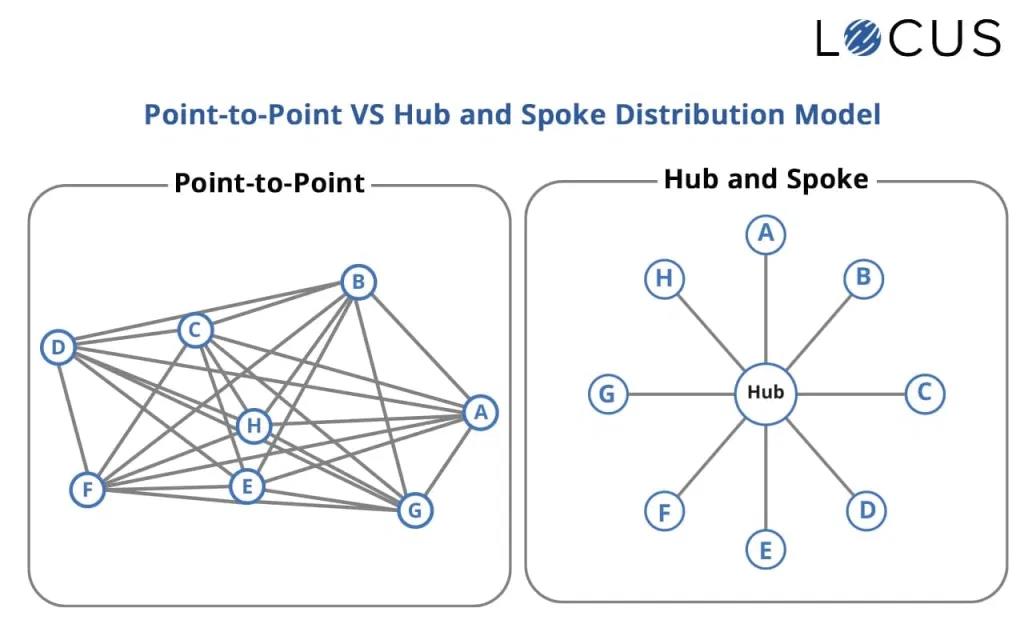
Now that we’ve understood how the logistics function i.e. how the centers are established such that the stock units are closer to the customer which makes delivery in a shorter time possible, let’s explore another question about Whether the platform has what we’re seeking.
When data is concerned Q-commerce is indeed a gold mine for data analytics! Everything we leave a footprint of is data: Every order, every cart left unfulfilled, every search, every address, everything is Data. This helps companies create personalized notifications to suggestive recommendations. It is not an exaggeration to say that: Data is the new Water.
Let’s go back to the opening statement of this article:
“Sophisticated dish-level demand prediction algorithms, and future-ready in-stations robotics…”
Let’s leave the Robotics aside for a while, and talk about the algorithms and the analytics that would be involved in the process. Let’s not go too far. Take Zomato's 10-min food delivery for instance (mind-it it's not about Groceries, but actual food which is piping-HOT!!)
The article talks about housing bestseller items (~20-30 dishes) from various restaurants based on demand predictability and hyperlocal preferences. This is where the existing data from the orders and the restaurants can be leveraged. But how is this possible?
With advanced analytics algorithms like Predictive Analytics on the Hyperlocal data of Restaurants, you can identify the most bought items, further analysis can be done on whether a cloud kitchen can store these, and that can be made available for a 10-min delivery.
Let it be Groceries or Food or Meat or pharmaceuticals, the key lies in identifying the Assortment of goods local to the area and that can be made available. Therefore to identify and optimize the assortment there is a need to understand how the Demand differs between each demographic segment, and how the supply is feasible. For example, seafood can be a product with high demand across geographies, but the freshest supply would be near the coastal areas.
For all the analysis to do the first step would be to identify the data. But, is this the first step? Probably not, to even bring analysis to the table, capturing the data is essential. As such Data Lakes for Q-Commerce would be the Zeroth step where the captured data is stored and can be extracted by Data Scientists to work on. Every Retail store, every E-commerce website and every Restaurant service needs data, but Q-Commerce companies strive and function on Data like blood is to a human being.
Let’s move out of the Food and Restaurant business, and come back to groceries for a while. For Data Analytics of Q-Commerce stores, there might be more parameters we might be dealing with like the necessity of Assortment, Pricing, Delivery Time, Forecasting, identifying Delivery centers, Workforce Planning wrt geographies, and more.
With the growing number of SKUs, limited shelf space, and growing complexities it is important to distinguish between the long and short-term demands in the customer behavior and determine the optimum mix of products for daily inventory. You can also find out any changes in demand wrt competitors.
Pricing is, and always will be the soft spot for most of the Q-Commerce platforms, as to date most platforms are in the negative bottom line and are aiming to grow positive over the years. But again, Customers are the King. Most customers compare prices between multiple platforms and it forms an integral part of their decision-making. As such, the competitive pricing should be such that the prices are real-time and not too different (higher) from that of your competitors. Again for this, the Hyperlocal strategy comes into place.
For example, look at the two images below of a Q-Commerce platform for two different places. You can see that some of the suggestions differ and some prices differ even though the product is the same.
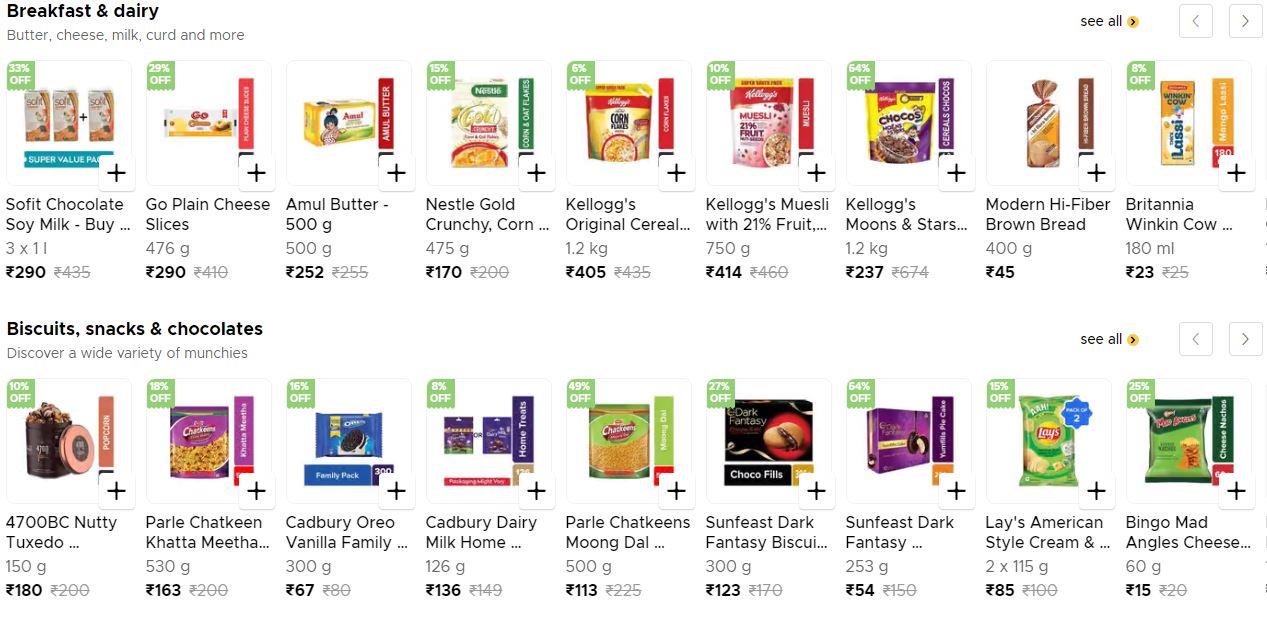
Source: Hyderabad Data
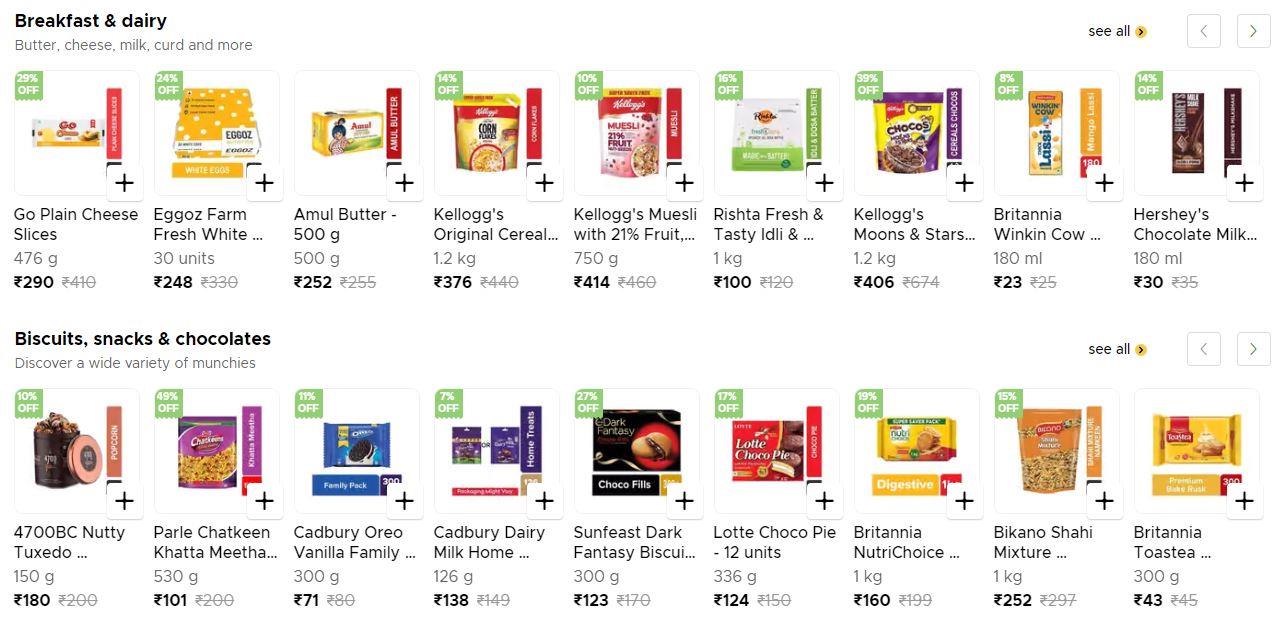
Source: Delhi Data
Though it is important right now, for example in India, most competitors offer the same approximate delivery time of 10-25 mins, what this influence is the identification and establishment of new micro-fulfillment centers around the city. It is also important to note that with players like Amazon, bringing in same-day or the next-day delivery, the customers are more inclined to get the goods sooner than at a discount. This also can be leveraged as a part of their branding strategy like Dominoes did for their 30-min Pizza even though it was discontinued later.
This is essentially the heart of the entire operation. This is what all the retailers rely on to identify and predict future sales patterns. This is especially important when the Dark Stores can carry ~ 2000 to 4000 SKUs ( in comparison to a traditional store which has up to 60,000 SKUs). This is also more critical when the Dark Stores also carry perishable goods like Fresh fruits, Vegetables, Meat, Bread, etc. If not taken care of, Demand Forecasting can create more bottlenecks, and points of wastage throughout the supply chain.
Planning the workforce is crucial as this is a bottleneck of the entire supply chain, and as most platforms' workforce are considered a Gig Economy. You can create demand with Marketing strategies, but if the workforce planning is not aligned with the demand it might result in bottlenecks. For example, this is one of the reasons why Swiggy has been discontinued across Hyderabad, Mumbai, and Bangalore for the same reason. Therefore analyzing the amount of workforce needed for multiple scenarios of planning is required beforehand to have solid hiring in place (also given the workforce has a choice with many platforms out there)
It is not just about Effective Data Management or Data Analytics, the question also arises about how the data is being visualized. In case you haven’t read about it, we’ve spoken in detail about how Business Intelligence is Changing the Business Landscape. In short, what we mean is with the enormous data that is being collected from multiple sources from multiple geographies for multiple users, having dashboards that can help Executives drill down into multiple parameters from the same place, saves a lot of time and resources. It also helps executives make faster decisions.
If you’ve come here, you must already be believing in this, but still, let’s check the trends around the world once. As it’s not only about creating more Dark Stores or giving more discounts, but it is about finding the right strategy, branding, acquisitions, and partnerships.
In the UK, Deliveroo partnered with supermarket chains such as Waitrose, ALDI, and Co-op. Elsewhere, Delivery Hero added 1,500 vendors in order to ‘support local restaurants, grocery stores, and pharmacies. Or how Even premium brands like Estee-Lauder signed up with Uber in 2021 for a 60-minute delivery of their products. And how Costco partnered with Instacart for same-day delivery.
It can also be how in Brazil, Rappi, a consumer-tech platform has acquired Avacado, an online grocery retailer. Or how in India, Zomato has invested in Blinkit or how Swiggy has acquired Dine-out. These are just a few examples, there are many such ones in this Q-Commerce space.
In this game of 10-15 mins, all the competitors are looking out to cover their bases and achieve the maximum potential possible.
Q-commerce is the fruit of Technology, it is how E-commerce has evolved into. It is also this technology that will make Q commerce tap more markets, create new strategies, bring new customer insights, and understand the changing consumer behavior. Also, technology is the only way into the hearts of the Digital Natives - Gen Z generation and Millenials. All-in-all with the right technology in place, Q-commerce can achieve:
And these are just the tip of the iceberg, you can create insights into Environmental, Social, and Governance concerns to identify any reusable packing options or identify how all these decisions affect your scenario planning
We are going to see E-commerce and Q-commerce flourishing in the future at least wrt the transactions and the new acquisitions, the sector has definitely flourished after Covid-19 and will continue to do so. If you are looking for Customer insights, Data Management, Scenario Planning, or just want to explore your possibilities with data, drop us a message and Contact Us today!
About Author

Data & BI Addict
When you theorize before data - Insensibly one begins to twist facts to suit theories, instead of theories to suit facts.